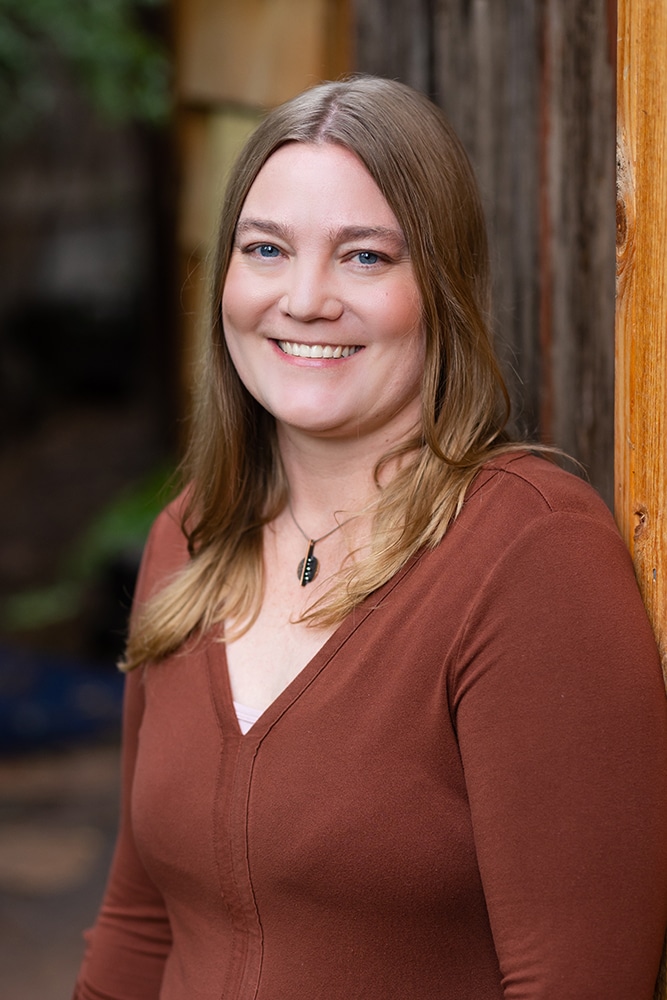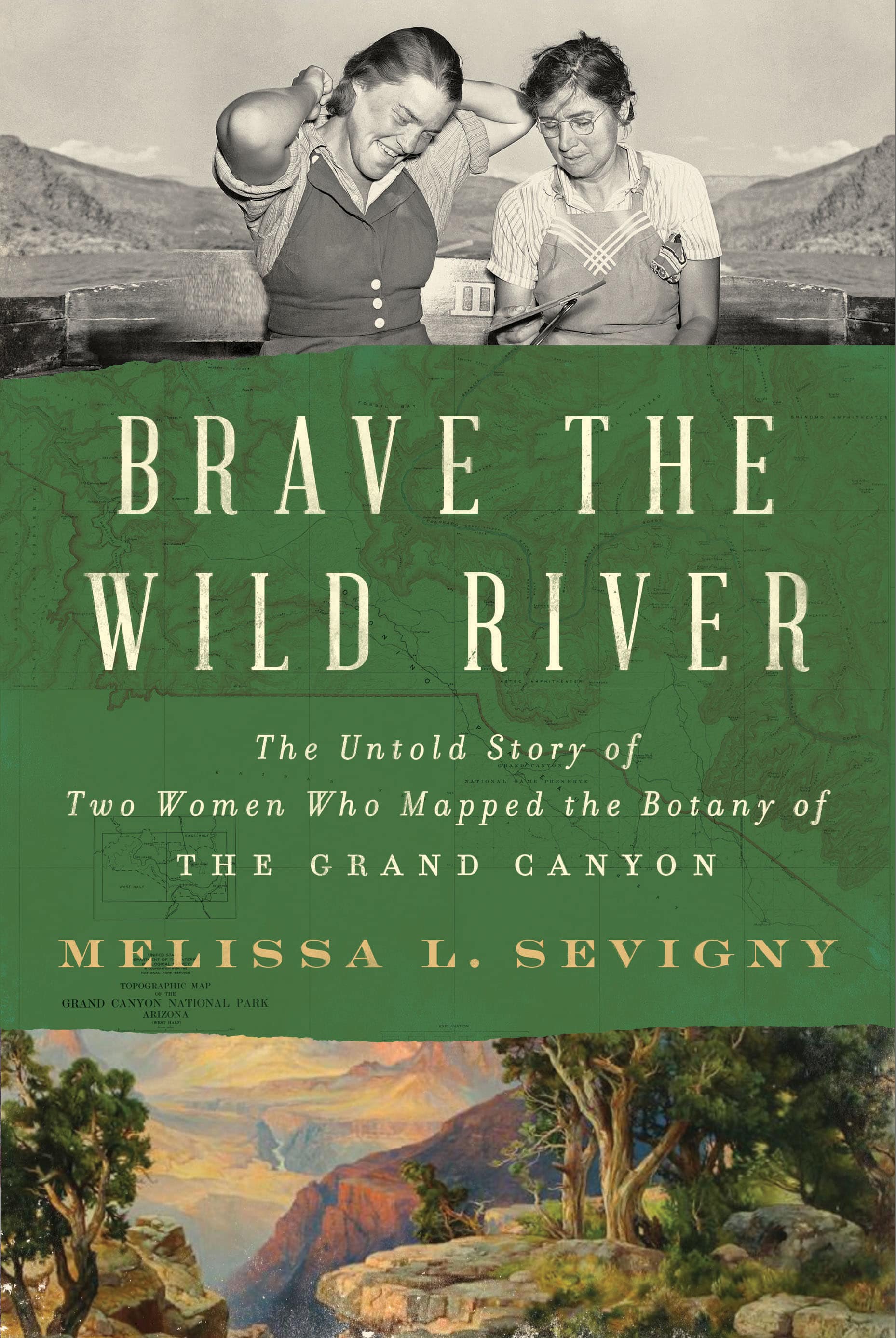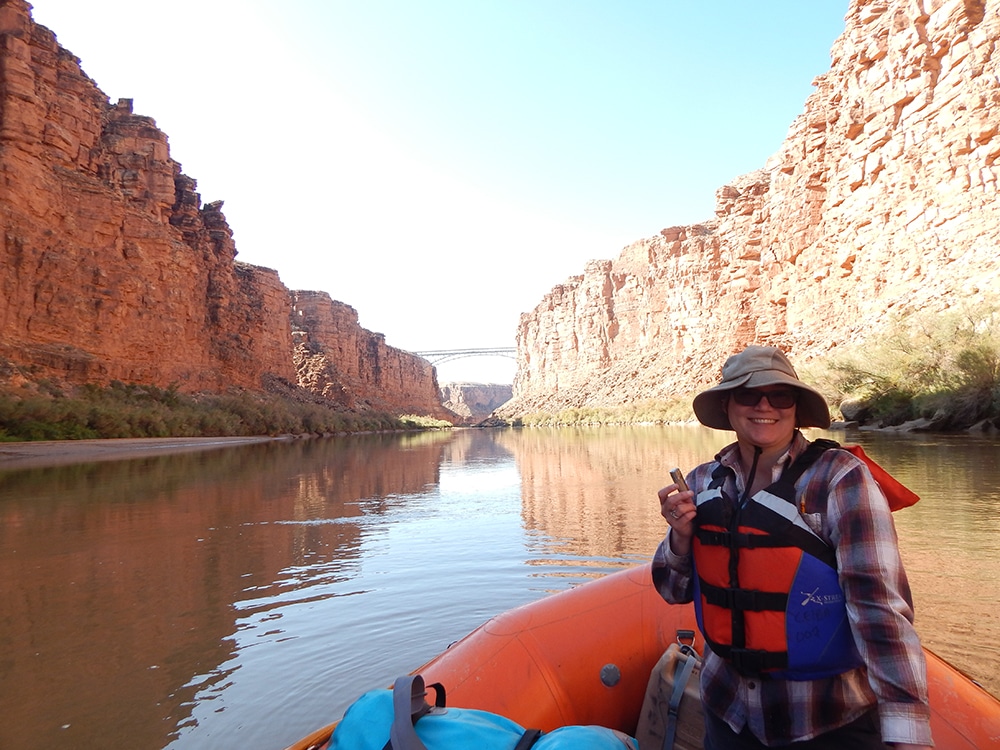It all started with a hat. It wasn’t even new—the hat on the table in front of science writer Melissa L. Sevigny was close to a century old. But it represented something so much bigger—the story of the first two women who ran the Colorado River through the Grand Canyon in 1938. Sevigny, who works at KNAU, started research on these two pioneering women using the Special Collections and Archives at Cline Library. Five years later, her book about those two women, Brave the Wild River, is in stores. The NAU Review talked to Sevigny about where her research took her, what she learned from Elzada Clover and Lois Jotter and where interested readers can go to hear her talk about her work.

I was living in Iowa at the time, recently out of graduate school and looking for a job that would bring me home to Arizona. I grew up in Tucson, but I’d grown used to cooler weather and snow in Iowa, so Flagstaff appealed to me. The position opened for a full-time science reporter at KNAU, and I went for it.
Tell me about your latest book.
Brave the Wild River is the true story of two botanists, Elzada Clover and Lois Jotter, who ran the Colorado River in 1938 through Cataract, Glen and Grand canyons and made the first formal plant collection for western botany in the region. They put together a scrappy and rather inexperienced crew and had a lot of mishaps along the way. As well as being a fast-paced outdoor adventure story, the book also confronts the sexism they faced and weaves in the natural and human history of this beautiful region.
Where did the idea for the book come from?
It came from NAU, actually! Late in 2018, I went to see an exhibit of Grand Canyon photographs at Cline Library’s Special Collections. There, on the wall, was a photograph of Clover and Jotter on their 1938 river trip. I had just recently run across their names, and I knew that Jotter’s diary and letters were archived in Special Collections, so I mentioned to the curator, Peter Runge, that I might write something about them. Peter went into the archives and retrieved Lois Jotter’s river-running hat, which she wore on the 1938 expedition. That inspired me to sit down and start writing—right there in the library, in fact.

What was your favorite part of the research and writing of it?
Rafting the Grand Canyon. I joined a botany crew in the fall of 2021 and did a two-week canyon trip, helping the crew weed an invasive species called Ravenna grass. I knew I would have to run the Grand Canyon to understand what Clover and Jotter experienced in 1938. I had never done any kind of whitewater river rafting before. It was incredible, and I loved the rapids, the plants and the geology. At one point, a heavy rain settled in, and I was trapped in my tent for a whole morning, and that’s where I wrote the epilogue to the book.
As you’ve talked to people on your book tour, have any interactions stood out?
Several relatives or former students of Elzada Clover and Lois Jotter have reached out to me since the book was published. That’s been incredibly moving. One person sent me a photo of Clover’s many-times-great grandniece, wearing Clover’s old hat with flowers in her overall pockets. Another was just setting off on a Grand Canyon rafting trip. It’s been wonderful to see how generations of people have been inspired by these two remarkable women.
Tell me about a significant childhood memory and how it has impacted your life today.
My mother took my sisters and me on many camping and hiking adventures. One that stands out is coming to the South Rim of the Grand Canyon just as a storm rolled in. We watched the clouds pour like taffy into the canyon and slowly fill it up, until there was nothing but a wall of white. The whole thing took place in a few minutes and the canyon was lost to view—but those few minutes were worth the long drive. I remember feeling inspired to write as I tried to describe the experience in my journal. Now, whenever I’m stuck on a writing project, I go out into nature and just really look at the world around me.
What did you want to be when you grew up?
A geologist.
What have you been most proud of recently?
I’m proud that Brave the Wild River got lovely reviews in Science and The New York Times—even a mention in People Magazine. Read
What is your favorite way to spend a day off?
Drinking coffee, reading books and working in the garden. A leisurely hike in the woods, too.
What are three things on your bucket list?
Canoe the Boundary Waters, take a train across Canada during the fall leaf color change and backpack across Catalina Island.
Join Sevigny and the staff of Cline’s Special Collections and Archives in a discussion about Brave the Wild River and the critical role the library’s collections played in Sevigny’s research, as well as see a screening of Elzada Clover’s 1938 river running films. Learn more on the library’s website.
- WHEN: 4-5:30 p.m., Thursday, July 13
- WHERE: Special Collections and Archives, second floor of the Cline Library



